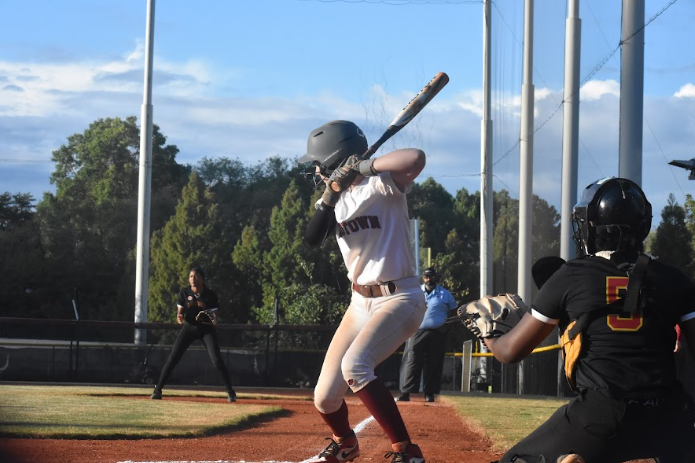18.9 million people tuned in to watch Caitlin Clark and the Iowa Hawkeyes take on Kamilla Cardoso and the South Carolina Gamecocks in the March Madness Finals on April 7, with the game peaking at 24 million viewers. The Gamecocks pulled out a win, but that wasn’t the only storyline from this game.
This is the largest number of people to watch any basketball game, NBA, WNBA, Collegiate Mens and Womens included, since 2019. It was also the first time in history the NCAA Women’s Finals had more viewers than the Men’s Finals, which had 14.7 million.
This March Madness Tournament was one for the books, with games like Iowa vs. LSU having 12.3 million viewers and Iowa vs. UCONN having 14.2 million viewers. The amount of viewers continued to grow throughout the tournament, with each level of games gaining more viewers. These numbers are due to the star power that these teams have: Angel Reece on LSU, Paige Buekers on UCONN and Caitlin Clark on Iowa. The growth of the game has been very prevelant over the last couple of seasons, but this season showed it to the highest extreme.
This has recently been labeled “The Clark Effect.” Clark had a season that is forever in the records, for NCAA points in a career, for NCAA single season points and for NCAA single season 3-pointers across both the men’s and women’s side. Clark averaged the most points and the most assists across all of D1 women’s basketball, the first time anyone has done that. Clark is also flashy; her points are nice, her threes are deep, and her assists are dimes. People started paying attention, including many who had never tuned in before. This energy carried over a little over a week later into the WNBA Draft, where a WNBA Draft record 2.45 million viewers tuned in to see Clark get drafted first overall to the Indiana Fever.
Going into the WNBA season and future collegiate seasons, women’s basketball has to take certain steps to continue to grow and harness the media attention it has earned.
One thing the WNBA can do to grow the sport is to expand. Right now, there are only 12 teams across the entire league, and each team has a max of 12 players, leaving 144 possible roster spots. Every year, the WNBA Draft has three rounds with 12 picks in each round. This means that there are 36 players, as well as any undrafted players, that are coming into these training camps. Many of these big-name rookie players are getting cut early on due to a limited number of spots. An example of this would be Alexis Morris, a guard from LSU who made a name for herself in LSU’s National Championship run and was cut before the WNBA season began.
Of the 36 players drafted in 2023, only 15 made a roster spot. By cutting these young, new players, the WNBA is losing a lot of marketability. People have started to follow the collegiate season in recent years, and they would be more motivated to watch the WNBA if they are familiar with players coming into the league.
Another thing that the WNBA could do to help ensure star talent stays in the league is increase the salaries of the players. Starting in 2023, the WNBA made a rule that, if a player was overseas for a different league, they had to be back by the beginning of training camp or they would either get fined or not be able to be rostered for the season.
This is a problem because, for many players, there is much more money found playing overseas. When the salary option for Breanna Stewart, a star player in the league, is $228,094, a supermax deal, in the WNBA versus $1.5 million for Russia’s UMMC Ekaterinburg, then most players would strongly consider the second option. This leads to some players, most notably international players, staying overseas, taking from some of the WNBA talent.
The WNBA’s TV partners made a very strategic move for this upcoming season, deciding to televise 36 of the Indiana Fever’s 40 games, knowing that people would tune in to watch Clark compete at this level.
However, at the collegiate level, the NCAA missed a massive opportunity to capitalize. In January, when the current media deal was exchanged for a new one, the NCAA did not split women’s basketball away from the other sports, which means that there will be less television time for these games, despite being one of the most viewed sports.
In order to facilitate more growth, the NCAA needs to figure out a way to put more of these games on television. The only time of year where women’s collegiate basketball is consistently on TV is during the March Madness Tournament, but in a lot of the games that were televised before the tournament, the viewing numbers were very high.
One of the reasons the number of viewers was so high was the focus on star players, like Clark or Reese. Right now, a lot of the newer viewers are only watching for the big-named players. The NCAA should become aware of this and continue to put forward the stars of the game until a consistent and large fanbase is formed and more and more lesser-known players and their teams will start to be watched.
But right now, the NCAA should focus heavily on players like Paige Buekers at UCONN, Juju Watkins at USC and Hannah Hidalgo at Notre Dame, as these three players already have a large social media following and also play the game in a very entertaining and watchable way, which will promote women’s basketball as a whole. They should also promote the teams that play a storing team game, like South Carolina and UCLA, as these teams are very fun to watch because anyone could be the star of the game at any point.
If the NCAA and the WNBA make the right moves, the future of women’s basketball is somewhere we couldn’t even begin to find. They need to expand the league and increase salaries in the WNBA, while promoting the big-name players for a couple of seasons in the NCAA and putting more games on national TV stations. Caitlin Clark provided an excellent base for this growth, but it is up to these organizations to continue to push the game forward and facilitate its growth.




















